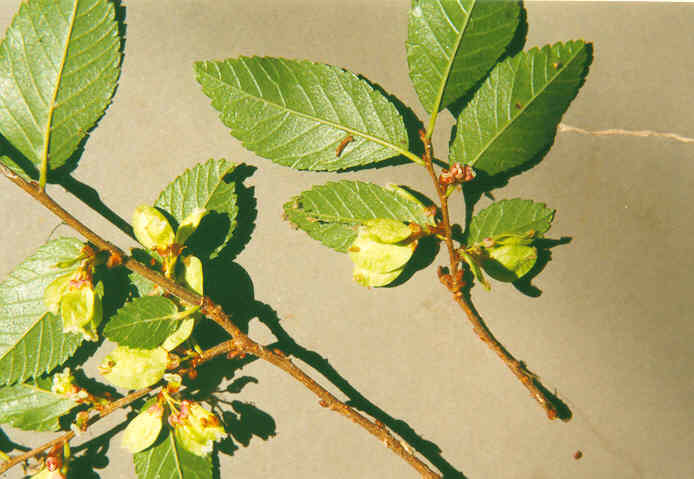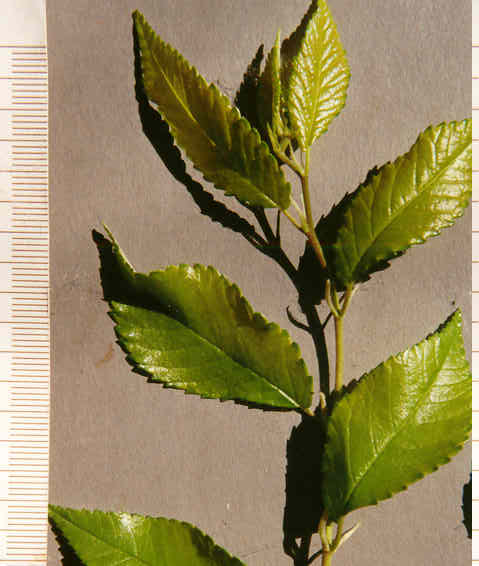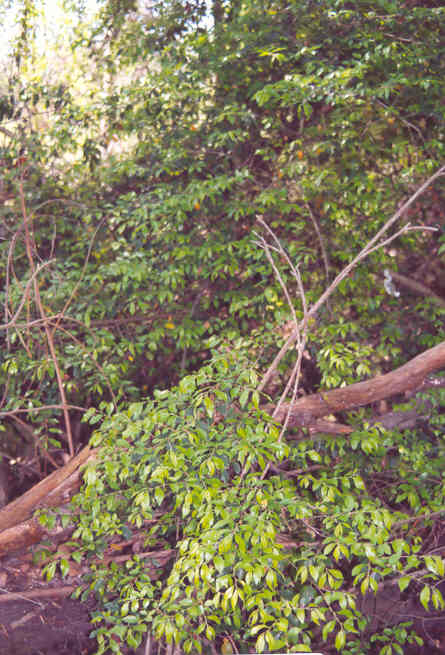
 |
Ulmus parvifolia Jacq.Ulmaceae (Elm Family)China, JapanChinese Elm |
August Photo
Plant Characteristics: Small tree to 15 (23) m., with broad open head, partially evergreen in mild climates; branchlets pubescent; lvs. alternate, simple, elliptic to ovate, 1.7-6.5 cm. long, acute, rounded and slightly unequal at base, simply serrate or nearly so, smooth, dark green above glabrous to slightly pubescent in axils of veins beneath, petioled; fls. bisexual, clustered in the axils; calyx 4 parted, stamens as many as calyx-lobes and opposite them; ovary superior, 1 celled, styles 2; samara elliptic-ovate, winged, about 1 cm. long, with a pubescent notch at apex.
Habitat: Escape from cultivation. Blooms in late summer, a characteristic of this species.
Name: Ul-mus, ancient Latin name of the elm. (Bailey 333). Parvifolia, small leaved. (Bailey 19).
General: Rare in the study area with only one small 3-4 m. tree known. This tree is located under a canopy of larger willow and Brazilian pepper trees on the bay side of Back Bay Dr., shortly before its termination at Eastbluff Dr. (my comments). Evergreen or deciduous according to winter temperatures and tree’s individual heredity. Variable in form, but generally spreading, with long arching, eventually weeping branchlets. Larger trees are tasty to leaf beetles, bark beetles, leafhoppers, aphids and scale. Dutch elm disease, spread by the elm bark beetle has killed many trees across the country. (Sunset Editors, New Western Garden Book 1984. 492). John Johnson reports that the larvae of the Mourning Cloak butterfly also eat the leaves of U. parvifolia. About 18 species native in the northern hemisphere. (Bailey 333).
Text Ref: Bailey 334; Sunset Editors, New Western Garden Book 1984. 492.
Photo Ref: Mar-April 01 #7,8,9; Oct 01 #10.
Identity: by R. De Ruff, confirmed by John Johnson.
First Found: March 2001.
Computer Ref: Plant Data 533.
Plant specimen donated to UC Riverside in 2004.
Last edit 8/8/05.
 |
 |
March Photo March Photo